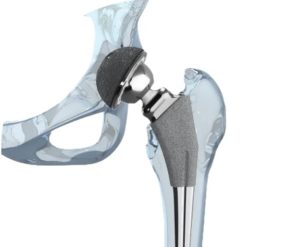Many high school and college students will be reporting to summer jobs and internships today.
Summer internships and jobs are a great way for young people to gain experience and earn money. But young workers must remember that they too can be hurt at work.
According to the Salem-News in Oregon:
Every six minutes in the United States a teenager is injured seriously enough on the job to go to an emergency room.
As with older adults and full-time employees, falls and equipment mishaps are the two most common causes of injuries for younger workers.
The newspaper offers tips from the Oregon Department of Consumer and Business Services, Occupational Safety and Health Division, about what young workers and their employers can do to prevent injuries at work.
The tips are worth repeating here, as they apply to North Carolina workers, as well.
– Promptly report any unsafe condition or equipment problems to your supervisor
– If you have any doubt about the safety of the materials you are handling or your work duties, bring your concerns to your supervisor’s attention
Here’s more from the newspaper:
Be ready for accidents and emergencies:
Know where the first-aid kit is located in your work area.
Do not respond to an accident unless you are trained in first aid. If you are not trained to respond, know who the designated emergency responder is in your work area.
Report any injury to a supervisor immediately.
Know where the emergency exits are in your work area.Prevent cuts and lacerations:
If you’re handling a knife, always cut away from the body.
If you do receive a cut, get first aid. All surfaces where blood may have spilled should be properly cleaned to protect you and others from bloodborne diseases.Protect yourself, and your senses:
Wear safety glasses to protect your eyes against liquid splashes or flying debris. If using chemicals, make sure you have been trained about chemicals that you are using and their hazards.
Wear hearing protection when exposed to loud noises.Work should affect your clothing choices:
Wear clothing that is appropriate for the job and work environment.
Wear enclosed shoes. Protect your feet from falling objects, lawn mower blades, hot grease, chemical spills, and other hazards. For jobs where heavy loads could fall, wear shoes with metal-reinforced toe guards.
Don’t wear loose clothing or dangling jewelry that can be caught in moving or rotating parts. Keep long hair restrained.Prevent slips, trips, and falls:
Keep floors clean and free of spills, oils, and debris.
Do not allow electrical cords and other objects to extend across a walkway.
While mopping, make sure signs warn others of the danger of wet surfaces.
If you have to use a ladder, make sure it is secure. Never step on the top platform of any ladder, including a stepladder.If your work involves machine operations:
Do not use equipment or tools without proper guards.
Never reach inside moving machinery.
Do not wear gloves or loose clothing while using machines with high-speed moving parts, like drill presses.
Never use electrical equipment when standing in water.For work that requires manual lifting, be sure to use proper lift techniques:
Get close to the load. Grab the load safely, with your hands under or low on the object.
Bend your knees, with feet slightly spread for balance and stability.
Keep your head, shoulders, and hips in a straight line as you lift. Do not twist. Turn your entire body, including your feet.
Know how much weight you can safely lift. Get help lifting if necessary.Keep safe and prevent exposure to violence where you work:
If you’re working late, keep doors locked and avoid working alone.
If there is a robbery attempt, do not argue or struggle with the perpetrators.
Ask for an escort to your car if it’s dark out. Park your vehicle in a well-lighted area.
The Oregon OSHA Web site also offers a free Young Workers’ Guide that employers and employees who are interested in preventing workplace injuries should read.

The Legal Examiner and our Affiliate Network strive to be the place you look to for news, context, and more, wherever your life intersects with the law.










Comments for this article are closed.